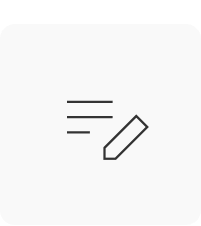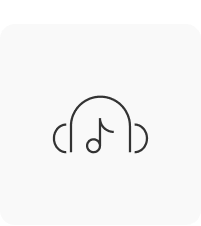"Take Your First Step into Korean Learning!"
Main topics of the Level 1 course:
- Basic greetings
- How to count numbers in Korean
- Basic grammar for forming your first Korean sentences
- Present and past tense
- How to say "who", "why", and "how" in Korean
Table of Contents
![]() Average lesson length: 13 minutes
Average lesson length: 13 minutes
Lesson 1. Hello. Thank you. / 안녕하세요. 감사합니다.
Lesson 2. Yes. No. What? / 네. 아니요. 네?
Lesson 3. Good-bye. See you. / 안녕히 가세요. 안녕히 계세요. 안녕.
Lesson 4. I’m sorry. Excuse me. / 죄송합니다. 저기요.
Lesson 5. It’s me. What is it? / 저예요. 뭐예요?
Lesson 6. What is this? This is … / 이거 뭐예요? 이거…
Lesson 7. This, That, It / 이, 그, 저
Lesson 8. It’s NOT me. / 아니에요.
Lesson 9. Particles for Topic and Subject / 은, 는, 이, 가
Lesson 10. have, don’t have, there is, there isn’t / 있어요, 없어요
Lesson 11. Please give me. / 주세요.
Lesson 12. It’s delicious. Thank you for the food. / 맛있어요. 잘 먹겠습니다. 잘 먹었습니다.
Lesson 13. I want to … / -고 싶어요
Lesson 14. What do you want to do? / 뭐 하고 싶어요?
Lesson 15. Sino-Korean Numbers / 일, 이, 삼, 사
Lesson 16. Basic Present Tense / -아요, -어요, -여요
Lesson 17. Past Tense / -았/었/였어요 (했어요)
Lesson 18. Particles for Location / 에, 에서
Lesson 19. When / 언제
Lesson 20. Native Korean numbers / 하나, 둘, 셋, 넷
Lesson 21. Negative Sentences / 안, -지 않다
Lesson 22. 하다 verbs
Lesson 23. Who? / 누구?
Lesson 24. Why? How? / 왜? 어떻게?
Lesson 25. From A To B, From C Until D / -에서/부터 -까지
Review What You’ve Learned in Level 1
Why you'll LOVE our Essential Korean Curriculum
All Levels Covered Short and Digestible Lessons Fun Story-based Reviews Review Quizzes and Interactive Audio Lessons
By simply following our curriculum that covers 10 levels, you can take your Korean skills from absolute beginner all the way up to advanced.
Each lesson is bite-sized and easy to understand, as it focuses on one grammar point at a time and provides many example sentences.
You can review the entire course through a fun story! The final lesson of each course features a fun story that allows you to review all the grammar and vocabulary introduced in the course.
You can test your new knowledge through review quizzes and interactive audio lessons, where our teachers ask you questions, and you can respond and check where you need to improve.
Who teaches this course?


What you can find in this course:

Lesson notes

MP3 file

PDF file

Sample dialogues

Sample dialogues

Review lesson
[Updated] Learn to Read and Write in Korean (Hangeul)![]()
#Hangeul #KoreanLetters #AbsoluteBeginners
How Korean Sentences Work![]()
#KoreanSentences #Grammar #Beginner
30 Essential Korean Adjectives For Beginners![]()
#KoreanAdjectives #Vocabulary #Beginner
20 Essential Korean Phrases For Beginners![]()
#KoreanPhrases #Speaking #Beginner
Level 1 Textbook ![]()
Level 1 Workbook ![]()
Level 1 Textbook & Workbook Package ![]()
More courses & books you might also like
[Updated] Learn to Read and Write in Korean (Hangeul)![]()
#Hangeul #KoreanLetters #AbsoluteBeginners
How Korean Sentences Work![]()
#KoreanSentences #Grammar #Beginner
30 Essential Korean Adjectives For Beginners![]()
#KoreanAdjectives #Vocabulary #Beginner
20 Essential Korean Phrases For Beginners![]()
#KoreanPhrases #Speaking #Beginner
Level 1 Textbook ![]()
Level 1 Workbook ![]()
Level 1 Textbook & Workbook Package ![]()






Level 2 lesson 10
드라마 를 보고있었어요
I was watching drama
Is that sentence correct?
Yes but it’s ‘드라마를 보고 있었어요.’ There’s no space between 드라마 and 를 and 보고 있었어요 is also separated😊
I can’t find my comment so I’m putting it again here
Level 2 lesson 6 answer
“졸려서 자고싶어요 그런데 내일이 시험이에요”
I’m sleepy so I want to sleep but tomorrow is the test/exam
이거 맞아요?
“I’m tired and I want to sleep. However, I have an exam tomorrow.”
졸려서 자고 싶어요. 그런데 내일 시험이 있어요.
I think “피곤해요. 자고 싶은데 내일 시험이 있어요.” = “I’m tired. I want to sleep, but I have a test tomorrow.”
Wait but if I can view all of these courses then why should I buy the books?
First is to support free education. Every little donation helps to provide better quality of the lessons and keep it available for free. And also a lot of people just prefer to have a copy version of the lessons because it helps them to absorb the information better.
And plus ttmik has workbooks for each level with tons of exercises to practice all that you’ve learned from courses here.
For example I don’t have a problem with reviewing the lessons online but I really wanna buy their workbooks for more practice
How to say “I live in India” in korean?
전 인도 살아요
감사합니다
안녕하세요. I am also learning Korean and I hope this will help.
To live is ‘사람 하다 ‘ and India is 인도. So , the sentence will be,
저는 인도에서 사람해요.
사람 means person and 살다 is to live. Here’s an example: I am from Mexico but right now I live in america.
맥시코 사람 이예요 하지만 지금 민국에서 살아요.
*미국에서
사랑해요. 그래서 내 마음이 아프다
Is this a correct statement?
Hi, I am also learning Korean and I hope this helps. I think you need to change the verb 아프다 (to be hurt) into the present tense to make it more appropriate as you changed 사랑하다 into 사랑해요. So instead of 아프다, it becomes 아파요.
thank you so much! can you help me with another sentence that I made? 나는 매일 밤 울어요.
이거 맞아요?
Hey there, I wonder if these two sentences are the same.
저는 퍼즐을 잘 풀어요.
저는 퍼즐을 푸는 걸 잘해요.
And how about these two?
저한테 또 거짓말을 했어요?
저한테 또 거짓말한 거 예요?
Thanks in advance 🙏
Hello, i just finished Level 2, if anyone wants to be study buddies, please add me on Instagram @asra_najath
The answer for the lesson 8 quiz is…
저는 매일 밤 열시에 드라마를 봐요.
= I watch a drama at 10 o’clock every night.
선생님 이거 맞아요 ?
Thank you for a great course. I was so surprized that I could understand almost 100% of the dialogue at the end. Taking this course really pays off.
안녕하세요! Im Myka from Philippines, im finding study buddy! let’s help and learn together ☺💛 you can message me on my kkt: mykrokosmos
hey! I’m also looking for a study partner! I have added you on kkt 🙂
안녕하새요 선생님, I wanna ask about object marking particles. is that correct if I said “왜 한국어를 배워요?” should I drop the 를 particle? because it is near the verb.
감사합니다
What’s the answer to lesson 5 quiz? Help me
안녕하세요 여러분! My name is Liz and I’m currently on level 2 lesson 16.
I’ve been studying Korean for about a year but I haven’t been consistent 🙁 It’s really hard for me to keep motivated and I completely fail at finding a study partner that can help me with my motivation problems. Mostly because the majority of the people I’ve talked to didn’t take Korean study very seriously or because of the time zone differences (I live in Mexico).
So, if you think that we can study together or you just want a friend… You can find me on KakaoTalk as LzzyWho1
안녕하세요 여러분! How do I ask someone to be my friend?
“징구 혜요?” (chinggu haeyo) Its asking to be friends with someone:>>
Hello! I just finished lesson 11, and I would like to practice sentences with my name. For that reason, I would lie to translate my name to Korean. Can someone help me? My name is Normalys 🙂
다 끝났어요..just finished level 2 and going to repeat the whole level again..
여러분 화이팅!
Hi I need a korean study friend you can add me from KakaoTalk my id : lordofthewands
안녕하세요 선생님
During the test dialogue, I can understand the korean transcript through reading but thr listening part this time was kinda hard for me to understand. What pointers can you give me to improve my listening skills.
감사합니다
Same with me, understanding by audio is hard for me too, apart from broadening my vocabulary i think TTMIK’s podcasts and videos of 100% korean conversations would be a nice try if you want to practice.
Hey guys!
Just finished lvl 2 if anyone wants to practice my kakao id is: willuu
In the 1st lesson in Level 2, there is this sample sentence 얼마에 팔 거예요? = At what price are you going to sell it? Can someone explain why there’s 에 after interrogative 얼마? Can’t I just say 얼마 팔 거예요? What’s the difference?
The -에 is for “At”. It isn’t correct or natural to say “얼마에 팔 거예요?” without the -에. It’s like instead of saying “At what price will you sell it?” you say “What price are you going to sell it?”. It just doesn’t sound right. Hope I helped!
Makes sense! Thanks for the help.
안녕하세요!! For lesson 9, how would you say “how many pencils” or “how many” a specific object?
I think you have to say “몇 개 연필?”
Hi, you have to say 연필 몇 개…
안녕하세요. I have a question for TTMIK teachers or anyone who can help answering: regarding lesson 4, how do you say that you do something with two different people? How do you place the -하고 or -랑? For example: I had a meal with my mom and dad. Is 엄마랑 아빠랑 같이 밥 먹었어요 correct? Or should it be 엄마랑 아빠 같이 밥 먹었어요 instead? I feel like it’s the former but I’m not sure..
Also, I love having the TTMIK teachers’ friends dropping sample sentences in the lesson. It gives new words and helps with listening skills since the manners of speaking are different. Looking forward to hearing more of it in the next lessons
엄마 아빠랑 ……….. I’ve heard that in a movie.
Hi! My answer for lesson 4 is: 저 는 컴퓨터 핸드폰이 사고싶어요. But I don’t know if they use 랑 for the “and”, or is it not needed?
I think it’s “저는 컴퓨터하고 핸드폰에 사고 싶어요”? Did you hear the -하고 after the 컴퓨터?
Oh, thank you very much. I think they use -하고, but I can´t hear it very well.
안녕 칭구! I’m from Philippines hehe looking for a study buddy. Here’s my Kakao ID: JULiEYA131
한국 친구 몇 명 있어요?
나: 한국 친구 없어요….
이거 맞아요?
“한국어를 공부 재미있어요”